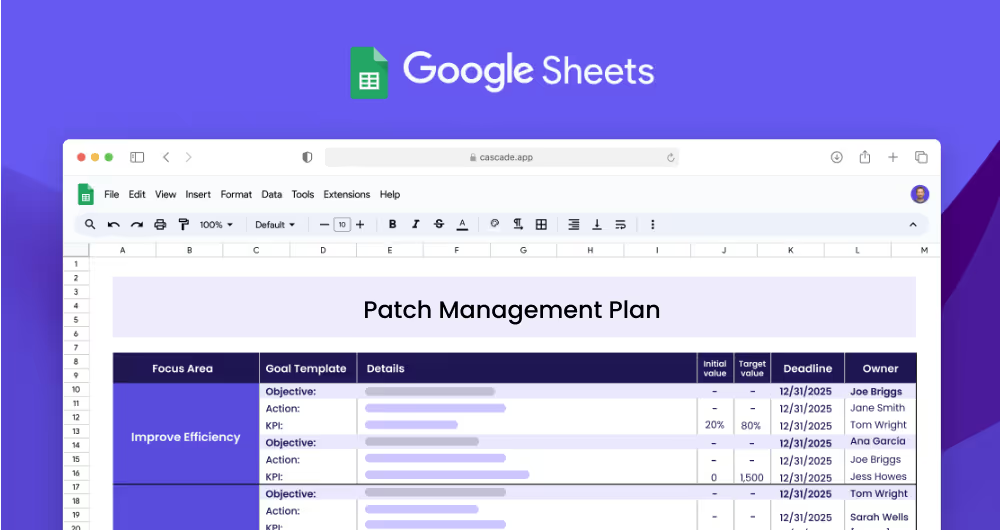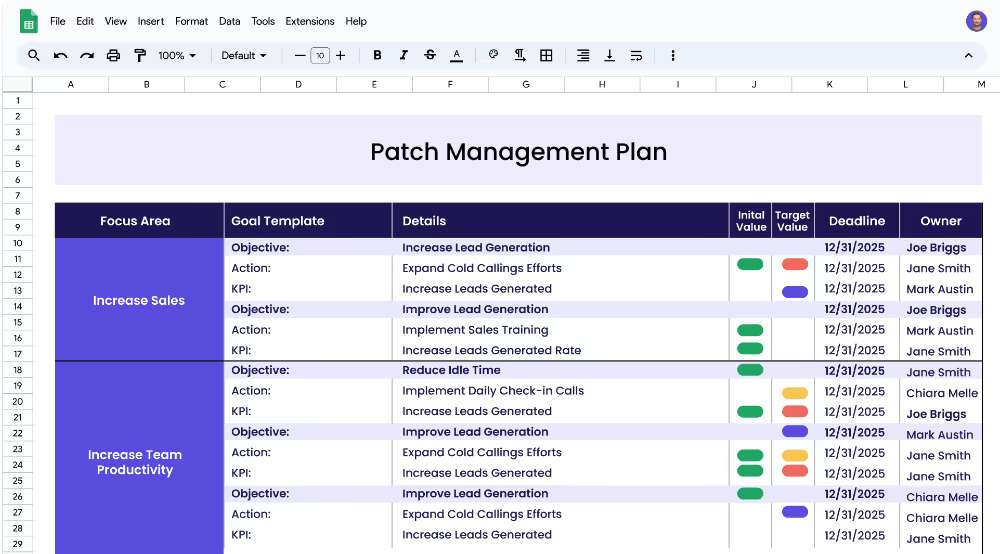A patch management plan outlines the guidelines and processes for testing, deploying, and maintaining software updates and patches. The plan details when patches should be applied, which systems should be patched, and how the patching process should be monitored and tested. It also includes information on how to respond to potential security threats that could arise from patching.
Each focus area has its own objectives, projects, and KPIs to ensure that the strategy is comprehensive and effective.
The Patch Management Plan template is designed for IT teams to create a plan for managing and implementing software patches and updates. The template is designed to help IT teams stay organized and on-track in their patching process and ensure that their systems are up to date and secure.
A focus area is a topic or area of expertise that your strategy should address. For example, in a patch management plan, focus areas could include implementing and managing software patches and updates, monitoring patch compliance, and evaluating patch performance. It is important to be as detailed as possible when defining your focus areas.
Objectives are specific, measurable goals that are used to achieve the focus areas. For example, an objective under the focus area of implementing and managing software patches and updates could be to establish a regular patching schedule. This objective should be broken down into smaller, more attainable goals.
Key Performance Indicators (KPIs) are measurable targets that can be used to determine whether or not objectives have been achieved. For example, a KPI under the objective of establishing a regular patching schedule could be to implement patches on schedule. This KPI should be tracked by setting an initial and a target value with an associated unit.
Projects (or actions) are the initiatives that need to be completed in order to achieve the KPIs. For example, to achieve the KPI of implementing patches on schedule, an action could be to create a patching schedule. These projects should be broken down into smaller, more achievable actions that can be completed in a reasonable amount of time.
If you’re ready to accelerate your strategy and see faster results, consider using Cascade Strategy Execution Software. Unlike spreadsheets, Cascade provides a streamlined platform designed to help you create, track, and execute your strategy with ease. Sign-up for free or book a demo with one of our strategy experts to get started today!


